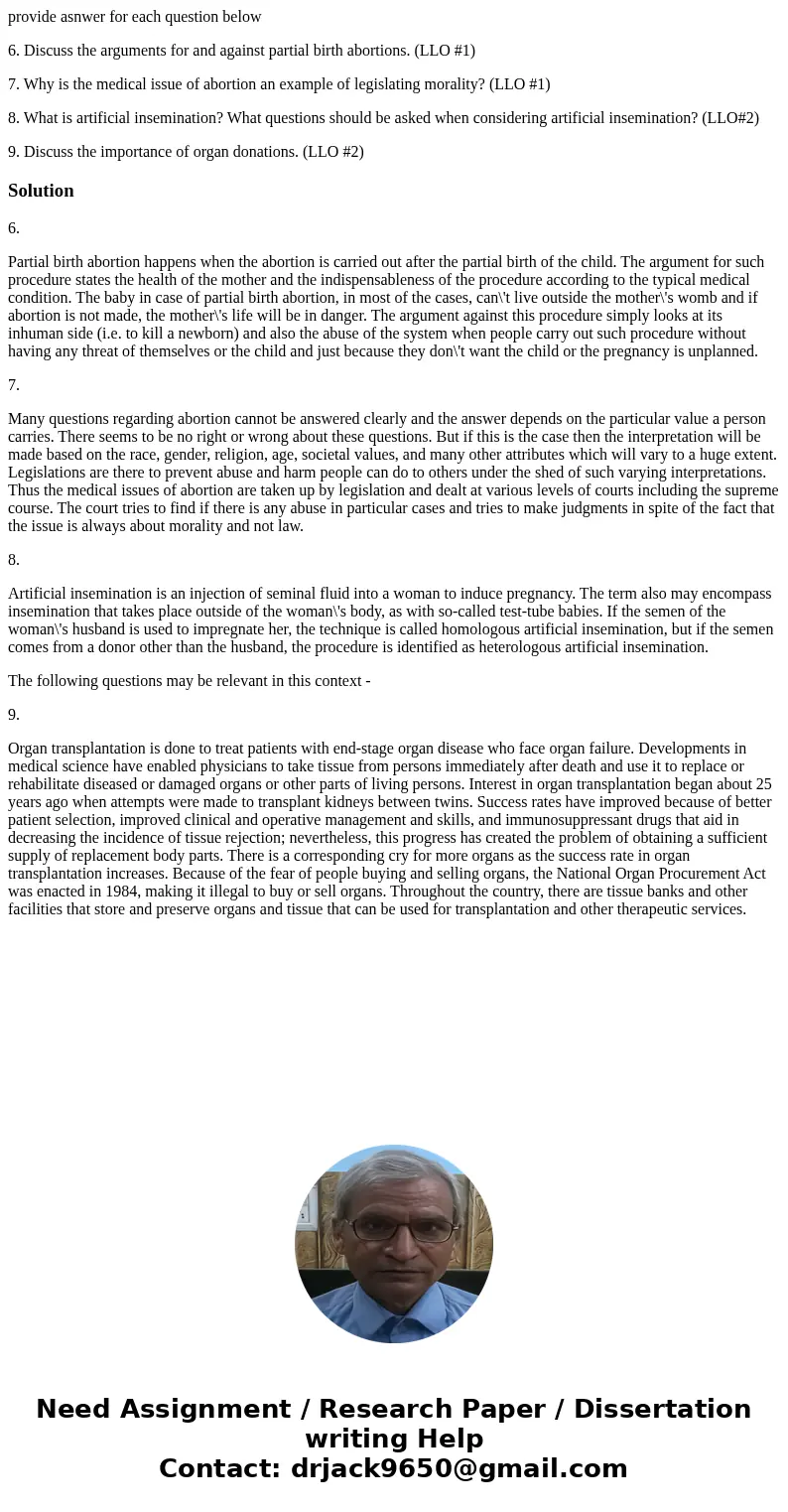provide asnwer for each question below 6 Discuss the argumen
provide asnwer for each question below
6. Discuss the arguments for and against partial birth abortions. (LLO #1)
7. Why is the medical issue of abortion an example of legislating morality? (LLO #1)
8. What is artificial insemination? What questions should be asked when considering artificial insemination? (LLO#2)
9. Discuss the importance of organ donations. (LLO #2)
Solution
6.
Partial birth abortion happens when the abortion is carried out after the partial birth of the child. The argument for such procedure states the health of the mother and the indispensableness of the procedure according to the typical medical condition. The baby in case of partial birth abortion, in most of the cases, can\'t live outside the mother\'s womb and if abortion is not made, the mother\'s life will be in danger. The argument against this procedure simply looks at its inhuman side (i.e. to kill a newborn) and also the abuse of the system when people carry out such procedure without having any threat of themselves or the child and just because they don\'t want the child or the pregnancy is unplanned.
7.
Many questions regarding abortion cannot be answered clearly and the answer depends on the particular value a person carries. There seems to be no right or wrong about these questions. But if this is the case then the interpretation will be made based on the race, gender, religion, age, societal values, and many other attributes which will vary to a huge extent. Legislations are there to prevent abuse and harm people can do to others under the shed of such varying interpretations. Thus the medical issues of abortion are taken up by legislation and dealt at various levels of courts including the supreme course. The court tries to find if there is any abuse in particular cases and tries to make judgments in spite of the fact that the issue is always about morality and not law.
8.
Artificial insemination is an injection of seminal fluid into a woman to induce pregnancy. The term also may encompass insemination that takes place outside of the woman\'s body, as with so-called test-tube babies. If the semen of the woman\'s husband is used to impregnate her, the technique is called homologous artificial insemination, but if the semen comes from a donor other than the husband, the procedure is identified as heterologous artificial insemination.
The following questions may be relevant in this context -
9.
Organ transplantation is done to treat patients with end-stage organ disease who face organ failure. Developments in medical science have enabled physicians to take tissue from persons immediately after death and use it to replace or rehabilitate diseased or damaged organs or other parts of living persons. Interest in organ transplantation began about 25 years ago when attempts were made to transplant kidneys between twins. Success rates have improved because of better patient selection, improved clinical and operative management and skills, and immunosuppressant drugs that aid in decreasing the incidence of tissue rejection; nevertheless, this progress has created the problem of obtaining a sufficient supply of replacement body parts. There is a corresponding cry for more organs as the success rate in organ transplantation increases. Because of the fear of people buying and selling organs, the National Organ Procurement Act was enacted in 1984, making it illegal to buy or sell organs. Throughout the country, there are tissue banks and other facilities that store and preserve organs and tissue that can be used for transplantation and other therapeutic services.

 Homework Sourse
Homework Sourse